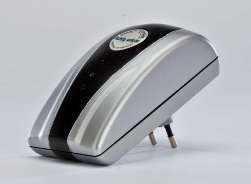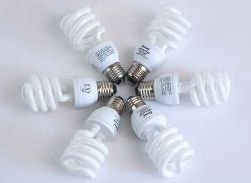Energy saving appliances: myth or reality?
 Not so long ago, in our markets, on the Internet, in some print media and even on television, an advertisement for a miracle device appeared, which, according to advertisers, can save up to 30-35% of electricity. What kind of device is this? How is it arranged? And is it really true that he is able to save so much energy?
Not so long ago, in our markets, on the Internet, in some print media and even on television, an advertisement for a miracle device appeared, which, according to advertisers, can save up to 30-35% of electricity. What kind of device is this? How is it arranged? And is it really true that he is able to save so much energy?
At about the same time, in different regions, these devices appeared under different names. Here are the approximate names of these devices: SberBox, smartbox, Energy Saver, Pover Saver, Saving-box, Economy, etc. According to manufacturers, and accordingly distributors, it is enough to simply plug the device into a power outlet, and it starts to work, that is, save our hard-earned money.
The cost of this device, depending on the region of distribution and the "generosity" of sellers, ranged from $ 10 to $ 70. So, we purchased one of these devices in order to try to deal with it ...
 Practical ways of saving electricity in everyday life that do not require large investments and obtained experimentally!
Practical ways of saving electricity in everyday life that do not require large investments and obtained experimentally!
Due to the constant increase in electricity tariffs, it becomes more and more relevant to limit the cost of its payment. There are many ways to do this. The most fashionable ways to save energy in everyday life are those related to new technologies, quite a lot has been written about them.
However, there are opportunities that do not require large expenditures and special knowledge; they will help you if you follow the elementary rules of energy consumption culture. Consider these features in detail. Savings in lighting public spaces Usually, when considering this issue, they suggest installing motion sensors and energy-saving lamps in stairwells and basements. In this case, the price of the question ...
Five myths about energy-saving lamps
 Around compact luminescent, so-called. energy-saving lamps in recent years there have been many rumors and myths. In this article, we will try to dispel some of the most common myths.
Around compact luminescent, so-called. energy-saving lamps in recent years there have been many rumors and myths. In this article, we will try to dispel some of the most common myths.
The first myth. Energy-saving lamps emit UV rays that are harmful to health.
It is known that light has on the human body affects the metabolism in the body, physical development and human health. The most useful in this regard is daylight (light from the sun). In artificial lighting when using incandescent lamps (thermal light sources), ultraviolet radiation is completely absent.
Ultraviolet radiation in the volume that we receive from energy-saving lamps is not only not harmful, but even very useful for the human body. It relieves fatigue, eliminates depression ...
Characteristics of energy efficiency classes of household appliances
 Starting January 1, 2011, the household appliances we purchase must have a class designation of energy efficiency. That is, in the passport of the device or on the case, there must be a label of a certain color, with a letter indicating the class of energy efficiency.
Starting January 1, 2011, the household appliances we purchase must have a class designation of energy efficiency. That is, in the passport of the device or on the case, there must be a label of a certain color, with a letter indicating the class of energy efficiency.
The letter A, on a bright green background, marks the equipment with the highest energy efficiency indicator. Marking B, means lower energy efficiency and is shown on a light green background.
The letters C, D, F, G follow and the color scheme changes from green to yellow (D) to bright red (G), showing the lowest energy efficiency. Additional classes also exist. A +, A ++, these are devices whose energy efficiency is higher than that of class A...
